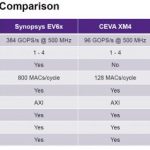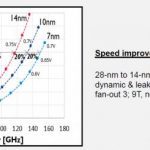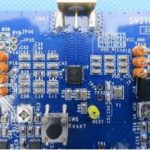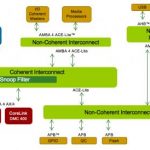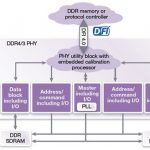When Synopsys bought Virage Logic in 2010, ARC processor IP was in the basket, but at that time ARC processor core was not the most powerful on the market, and by far. The launch of EV6x vision processor sounds like Synopsys has moved ARC processor core by several orders of magnitude in term of processing power. EV6x deliver up to 100X… Read More
HBM controller IP holds the key to bandwidth
We were waiting to see what a different roster including SK Hynix and Synopsys would have to say on HBM in the latest Open Silicon webinar. This event focused on HBM bandwidth issues; a packaging session on 2.5D interposers was promised for a future webinar.… Read More
Why USB 3.1 Certification is a “Must Have”?
USB 3 protocol is now height years old, but USB 3.1 is much more recent (2014). The adoption behavior for USB protocol is unique, as USB 2.0 bandwidth (480 Mbps) is largely enough for certain applications. Nevertheless we have seen the sales for USB 3 IP passing the USB 2 in value during 2014, and the total USB IP segment becoming the … Read More
Are Standard Cell Libs, Memories and Mixed-signal IP Availabe at 7nm FF?
More than 500 designers (562) have responded to a survey made in 2015 by Synopsys. Answering to the question “What is the fastest clock speed of your design?” 56% have mentioned a clock higher than 500 MHz (and still 40% higher than 1 GHz). If you compare with the results obtained 10 years ago, the largest proportion of answers was for… Read More
Is Smart Bluetooth de facto standard for IoT Wearable, Beacons, Fitness and Health ?
Synopsys launch BTLE PHY IP, qualified by the Bluetooth Special Interest Group (SIG) and meeting compliance with the Bluetooth® Smart v4.2 specification. The company has built a partnership with Mindtree to provide a complete solution, integrating Synopsys’ Bluetooth Smart PHY IP and Mindtree’s production-proven BlueLitE… Read More
True Random Number Generation
Random numbers are central to modern security systems. The humble password, perhaps the least profound application, is encrypted and verified against using SHA or MD algorithms with a random number salt. You probably remember a college class on how to generate pseudo-random numbers algorithmically, some very sophisticated.… Read More
Does IoT need Sensor Fusion? Yes, but at low-power, low cost…and higher performance
We said this in the past, but let’s reiterate that IoT devices will be successful if they can meet low-cost and low-power requirements. Low-cost is the condition for IoT devices market penetration, I mean such a market adoption that we count several IoT systems (and dozens of devices) in every house. That’s the only way to reach the… Read More
How Not To Be Incoherent
The advantage of working with cache memory is the great boost in performance you can get from working with a local high-speed copy of chunks of data from main memory. The downside is that you are messing with a copy; if another processor happens to be working in a similar area, there is a danger you can get out of sync when reading and writing… Read More
HDCP 2.2, Root of Trust, Industry’s First SHA-3 Security IP from Synopsys
Did you know that by 2020 90% of cars will be connected to Internet? Great, but today, there are already more than 100 car models affected with security flaws (Source: theguardian.com, 2015). That 320 apps are installed on average smartphone device? It would be a complete success, but 43% of Android devices allow installation of… Read More
Advances in DDR IP Solution for High-Performance SoCs
In this era of high-performance, low-power, and low-cost devices coming up at an unprecedented scale, the SoCs can never attain the ultimate in performance; always there is scope for improvement. Several methods including innovative technology, multi-processor architecture, memory, data traffic management for low latency,… Read More


